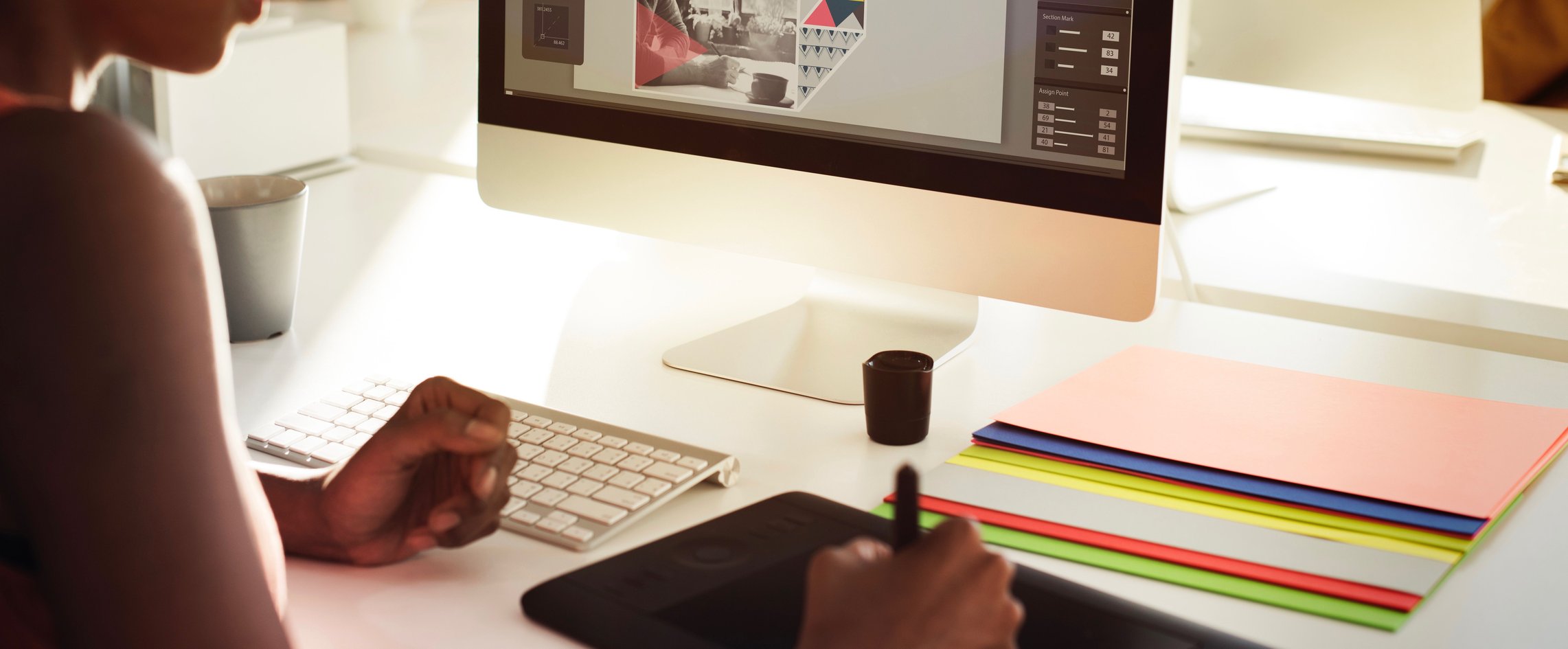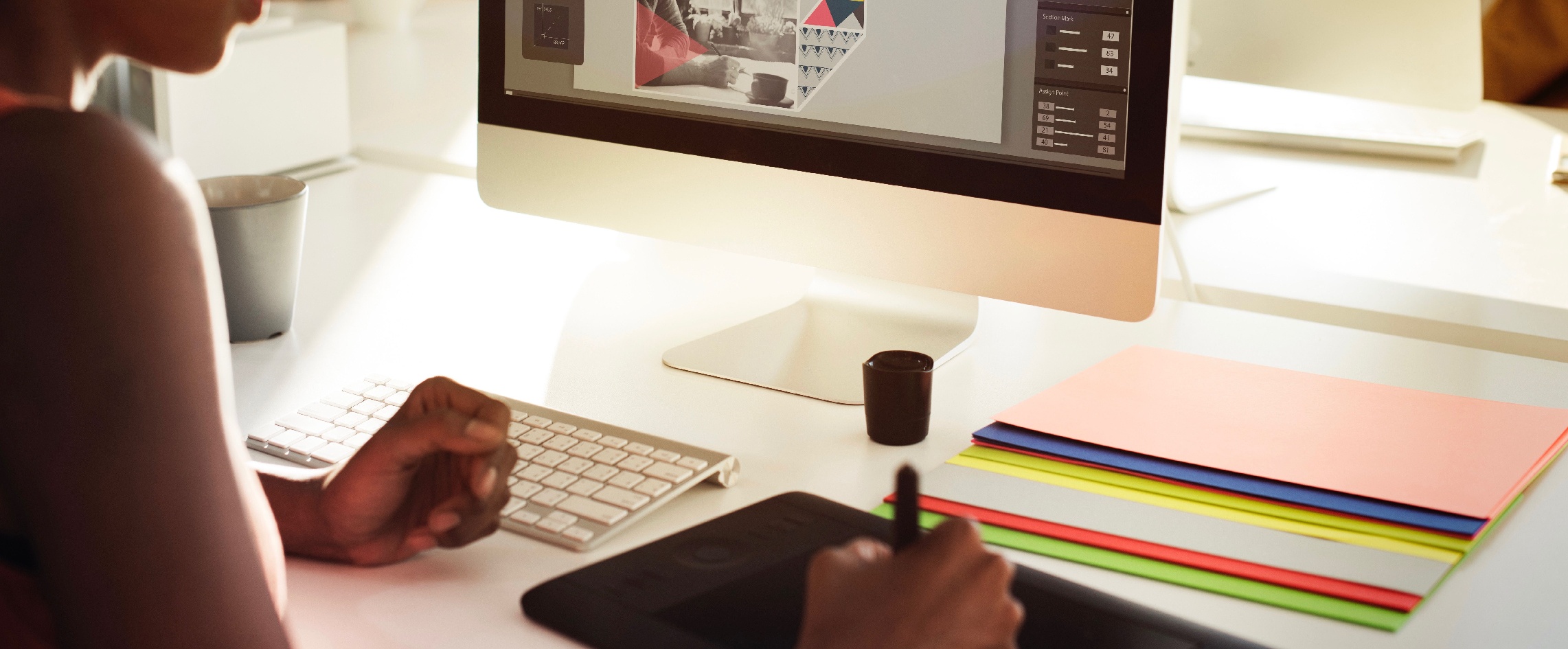Want to Learn Graphic Design? If you make a point to listen to and engage with them, you'll become more familiar with the online design world, which can help you discover more tips from other industry experts, become comfortable with relevant terminology, and stay on top of trends. You'll also start to understand your own personal style preferences and interests. If you find yourself continually saving infographics, for example, you might start looking into specific resources to learn how to create them. The designers on these sites often provide insight into their design processes, which will be key as you start your own creations. The key is to be really specific with your searches, so you can find a highly relevant tutorial. Don't get frustrated if you can't duplicate a design exactly -- remember, the process is more important than the result. It's really up to you to choose how you go about actually creating it. You'll have to try out different options to find what works for each design. Inbound.org offers a great feedback center where viewers can comment directly on your design.

For many of us, the thought of high school conjures memories of ample notebook doodles. Hand-drawn bubble letters, pictograms, and stick-figures would decorate homework, tests, and papers — and teachers, of course, were constantly asking us to knock it off.
And so, most of us did, perhaps because we figured out that we just weren’t that good at drawing on paper. But when some of us were in high school, we didn’t yet have the numerous digital options for “drawing” our ideas. But now, machines can help us bring them to life — and it’s become a career path for many people.
Graphic design is something that marketers can always benefit from learning, even without a formal education. In those cases, we enter a world of do-it-yourself education, with repeated recommendations like, “learn Photoshop, Illustrator, and InDesign,” or, “read a book about basic design principles.” And as much as those help, learning fundamentals, navigating new tools, and developing a personal style make for a tricky balancing act.
That’s why we put together this list of tips that we wish we had received at the onset of our respective DIY graphic design journeys, along with some tools that can help you with them.
8 Tips for Learning Graphic Design
1) Always keep an ear to the ground.
As marketers, we already know how much there is to learn from influencers. After all, 49% of folks trust the people they know above anyone else for product or service recommendations, and in the digital age, that includes influencers.
Influencers — who according to NeoReach are “individual[s] with an online presence who … influence the opinions and behaviors of your target audience” — are often willing to share the secrets to their success in their content. If you make a point to listen to and engage with them, you’ll become more familiar with the online design world, which can help you discover more tips from other industry experts, become comfortable with relevant terminology, and stay on top of trends.
Wondering how to engage? Turn to Twitter or Instagram as a place to start conversations with these influencers. You never know who might respond to your questions — and any positive connection you make can only help you learn more. Following along and joining the exchange can naturally lead you to become a part of a design community that will support you throughout your journey.
What to Do Right Now
Create a targeted list of influential designers on Twitter, so you can follow their daily insights without having to pick out their tweets from a sea of friends, coworkers, and news sources. You can use the Social Monitoring tool in your HubSpot software to do this by following the people on this list, specifically as they discuss topics that matter to you.
Add a variety of influencers to this list — a mix of those who are well-known among most designers, those that personally inspire you, and those whose work you do not enjoy. That last point may seem counterintuitive, but consistently observing the work of that group can help you understand why you don’t like it, which is a key part of understanding design.
If you’re not sure how to discover designers to follow, try 365 Awesome Designers, which features the work of one designer each day.
2) Collect inspirational work.
Once you decide to learn design, start building a catalog of work you think is successful. That can be as simple as bookmarking images in your web browser, making a Pinterest board, or saving items to a folder on your computer. Like a list of influencers, a catalog of inspiring work will help you to identify trends — both past and present — in design as you begin to recognize patterns in the work of others. You’ll also start to understand your own personal style preferences and interests. If you find yourself continually saving infographics, for example, you might start looking into specific resources to learn how to create them.
Your catalog will also serve to inspire designs you create in the future, which is underscored by the idea that “all creative work builds on what came before” — a line from Austin Kleon’s TEDx talk. If you can reference items in your catalog quickly, you’ll be better equipped to begin your own projects.
Get acquainted with leading designer portfolio sites like Dribbble and Behance. These platforms showcase an abundance of high-quality work from leading designers across the spectrum — everyone from web and UX designers, to graphic designers and typographers. The designers on these sites often provide insight into their design processes, which will be key as you start your own creations.
Setting aside time in your day to review these sites might be hard on top of your workload. One way to naturally work it into your day is to use the app Panda, which replaces your “New Tab” in Chrome with an aggregated stream of content from various sources, including Dribbble. Each time you open a new tab, you can discover and save something that catches your eye. Fair warning, though: An application like this might be distracting to some.
3) Dissect the process.
One of the most pivotal moments in my design journey was when I recognized that every single illustration, infographic, and icon I had ever ogled over was the product of someone mastering how to combine shapes and lines. That’s not to say that other factors don’t play a role — just wait until you try and learn meshes in Illustrator — but fundamentally, these designs were built up from simple shapes.
Analyzing the process behind a design will allow you to understand the steps required to produce a piece of work. Depending on your current skill level, you may have a leg up in knowing which tools were used, or which aspect was created first. But don’t let that stop you — examining the construction of a design will let you flex your creative muscle. Educated guesses will do far more…

COMMENTS